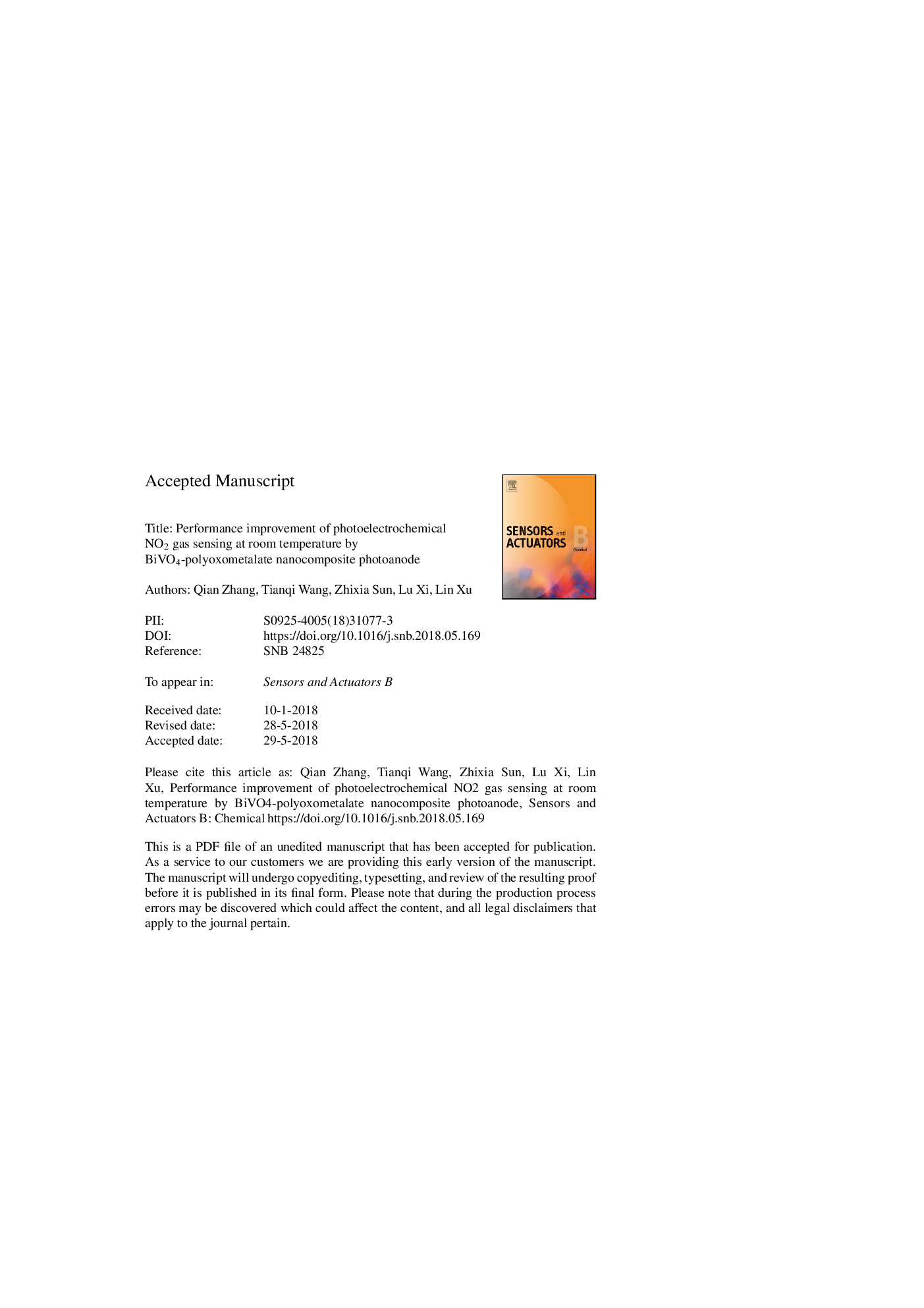| Article ID | Journal | Published Year | Pages | File Type |
|---|---|---|---|---|
| 7138879 | Sensors and Actuators B: Chemical | 2018 | 32 Pages |
Abstract
Owing to the superior properties of non-toxic, low-cost, high stability and excellent photoelectrochemical performance, BiVO4 has become a popular n-type semiconducting material. In this work, we prepared the photoanode of BiVO4 nanocomposite loaded with polyoxometalates (POM) as well as fabricated the relevant photoelectrochemical gas sensing devices for NO2 detection. Because the photocurrent response intensity of the BiVO4/POM photoanode is in direct proportion to the photoelectrochemical gas sensing capability, we also measured the photocurrent response of the photoanode containing different POM, and found the photocurrent intensity enhancement in the order Na7PW11O39 (PW11)â¯<â¯H3PMo12O40 (PMo12)â¯<â¯Na10SiW9O34 (SiW9)â¯<â¯H3PW12O40 (PW12). Among them, PW12 exhibits the highest photocurrent response. Furthermore, the BiVO4/PW12 nanocomposite device demonstrated higher gas sensing performance towards NO2 at room temperature (22â¯Â°C), as compared with the pristine BiVO4 device, the BiVO4/PW12 device exhibited a high response of 32.8% towards 50â¯ppm NO2, which was three times higher than the pristine BiVO4 device, along with high response, excellent reproducibility and selectivity. The enhanced photocurrent responses and gas sensing performance are certainly attributed to the incorporation of POM, which could facilitate charge separation and photogenerated electrons transfer in semiconductor, so that the electron-hole recombination in BiVO4 could effectively be retarded. This study provides a new insight into developing low-cost photoelectrochemical gas sensors based on BiVO4 modified with POM.
Related Topics
Physical Sciences and Engineering
Chemistry
Analytical Chemistry
Authors
Qian Zhang, Tianqi Wang, Zhixia Sun, Lu Xi, Lin Xu,
